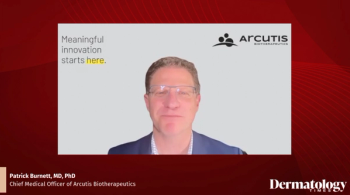
Ultrasound device passes preclinical tests
Orlando - A new noninvasive body sculpting device (LipoSonix, LipoSonix, Inc.) has shown promise in preclinical and human studies, an expert says.
Based on preclinical research and studies in Mexico involving 36 humans, "We're very encouraged by what we see," says Peter B. Fodor, M.D., F.A.C.S., chairman of LipoSonix, Inc.'s medical advisory committee, associate clinical professor of plastic surgery at UCLA and past president of the American Society for Aesthetic Plastic Surgery (ASAPS).
Dr. Fodor also designed the studies. He says he kept two objectives in mind.
The device delivers high-energy focused ultrasound (HIFU) to selectively break up adipose tissue while sparing the skin and surrounding tissue, Dr. Fodor says. As the device damages fat cells, they are metabolized by the body's normal absorption mechanisms, he adds.
Concerns
"One concern we had was whether the metabolic byproducts of the absorption could potentially be dangerous or toxic," Dr. Fodor says.
However, he adds that after researchers analyzed several metabolic byproducts including triglycerides, "There was no danger whatsoever found from an increased range of free fatty acids, and no problems with liver enzymes or blood lipids" in any of the subjects.
The researchers' second concern involved precision in control of the device's clinical effect.
"If this device was just going to destroy fat cells without allowing us to control precisely the zone of the damage, it could just produce large divots, irregularities and problems," Dr. Fodor explains.
Finding: Safe, precise
However, researchers found that this was not the case, at least in early studies using treatment zones measuring 1 cm wide.
"We were very happy to see that the LipoSonix device provides both safety and precision," Dr. Fodor says.
Although future studies will treat more aggressively, he adds that in early-stage research, "We must be prudent. We want to walk before we run."
In the human trials, the device achieved reductions in waist circumferential measurements of 2 cm to 6 cm at one-month post-treatment. Dr. Fodor says that results appeared after one treatment, though additional treatments improved them.
Advantages
Advantages of the device include the fact that it requires no surgery or anesthesia and causes minimal discomfort and post-treatment downtime, he adds. As for adverse events, Dr. Fodor says a few early patients experienced the equivalent of mild sunburn on treated areas that lasted about a day. However, he reports that device modifications eliminated this problem.
More research
"It's a revolutionary technique," Dr. Fodor says, "but I cannot say it will replace liposuction tomorrow. A lot more work must be done," he says.
To that end, LipoSonix, Inc. is in discussions with the Food and Drug Administration about beginning large-scale safety and efficacy testing.
"The initial studies in Mexico were done in abdominoplasty patients. One would throw away (excess) tissue anyway, so we were able to look at it under a microscope," Dr. Fodor says. Researchers performed subsequent studies in Mexico on patients who had not undergone abdominoplasties, as will be the case in the device's U.S. studies, he adds.
"The device's indications are universal," Dr. Fodor says. He says he believes that skin laxity will not be a problem because the procedure is less traumatic than lipoplasty, although studies of this nature must wait until the device has proven its basic safety and efficacy.
Newsletter
Like what you’re reading? Subscribe to Dermatology Times for weekly updates on therapies, innovations, and real-world practice tips.

















